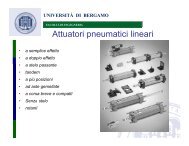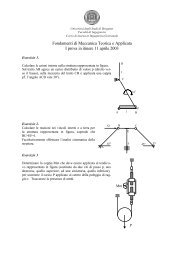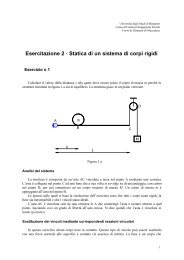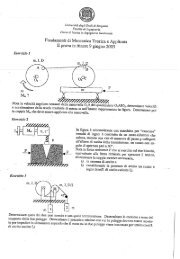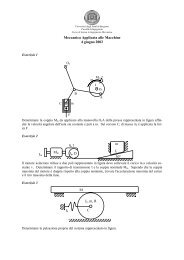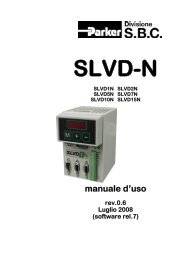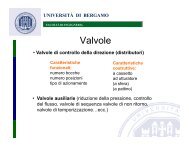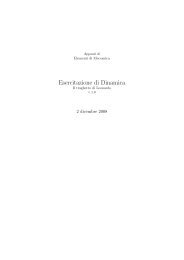Using the Soft-Soil tire model
Using the Soft-Soil tire model
Using the Soft-Soil tire model
You also want an ePaper? Increase the reach of your titles
YUMPU automatically turns print PDFs into web optimized ePapers that Google loves.
<strong>Using</strong> <strong>the</strong> <strong>Soft</strong>-<strong>Soil</strong> <strong>tire</strong> <strong>model</strong><br />
Elastic-plastic <strong>tire</strong>-soil contact<br />
13<br />
*<br />
R<br />
f0<br />
1<br />
<br />
h<br />
f<br />
h<br />
R 0<br />
0<br />
<br />
(27)<br />
Elastic and Plastic deformation<br />
Depending on <strong>the</strong> soil properties one part of <strong>the</strong> deformation is elastic and <strong>the</strong> remaining part is nonirreversible<br />
(plastic deformation). The elastic deformation is calculated with by <strong>the</strong> soil stiffness C s at <strong>the</strong><br />
maximum normal stress max :<br />
(<br />
<br />
he<br />
<br />
C<br />
m<br />
s<br />
)<br />
(28)<br />
Multi-pass effect<br />
When a <strong>tire</strong> has passed a certain spot of soil, a second <strong>tire</strong> will experience different soil properties when<br />
rolling over that spot due to <strong>the</strong> plastic deformation of <strong>the</strong> soil by <strong>the</strong> first <strong>tire</strong>.<br />
Therefore this <strong>Soft</strong> <strong>Soil</strong> <strong>tire</strong> <strong>model</strong> stores <strong>the</strong> elastic and plastic deformation of each <strong>tire</strong> as a function of<br />
<strong>the</strong> contact point x,y coordinates. When a <strong>tire</strong> passes a point with plastic deformation caused by a<br />
previous <strong>tire</strong>, <strong>the</strong> normal pressure calculation will account for <strong>the</strong> plastic deformation history.<br />
Figure 10 explains <strong>the</strong> mechanism applied in this <strong>tire</strong> <strong>model</strong> [8]:<br />
Assume two <strong>tire</strong>s rolling after each o<strong>the</strong>r over <strong>the</strong> same spot of soil. The first <strong>tire</strong> will have a total<br />
deformation h 1 existing of a plastic part h p1 and an elastic part h e1 . When a second <strong>tire</strong> passes <strong>the</strong> same<br />
spot, <strong>the</strong> soil will first have an elastic deformation from A to B (= h e1 ) and <strong>the</strong>n continue to follow <strong>the</strong><br />
normal pressure characteristic to point C. The plastic deformation of <strong>the</strong> second <strong>tire</strong> h p2 will be equal to<br />
<strong>the</strong> total deformation h 2 subtracted with <strong>the</strong> elastic deformation h e2 .



